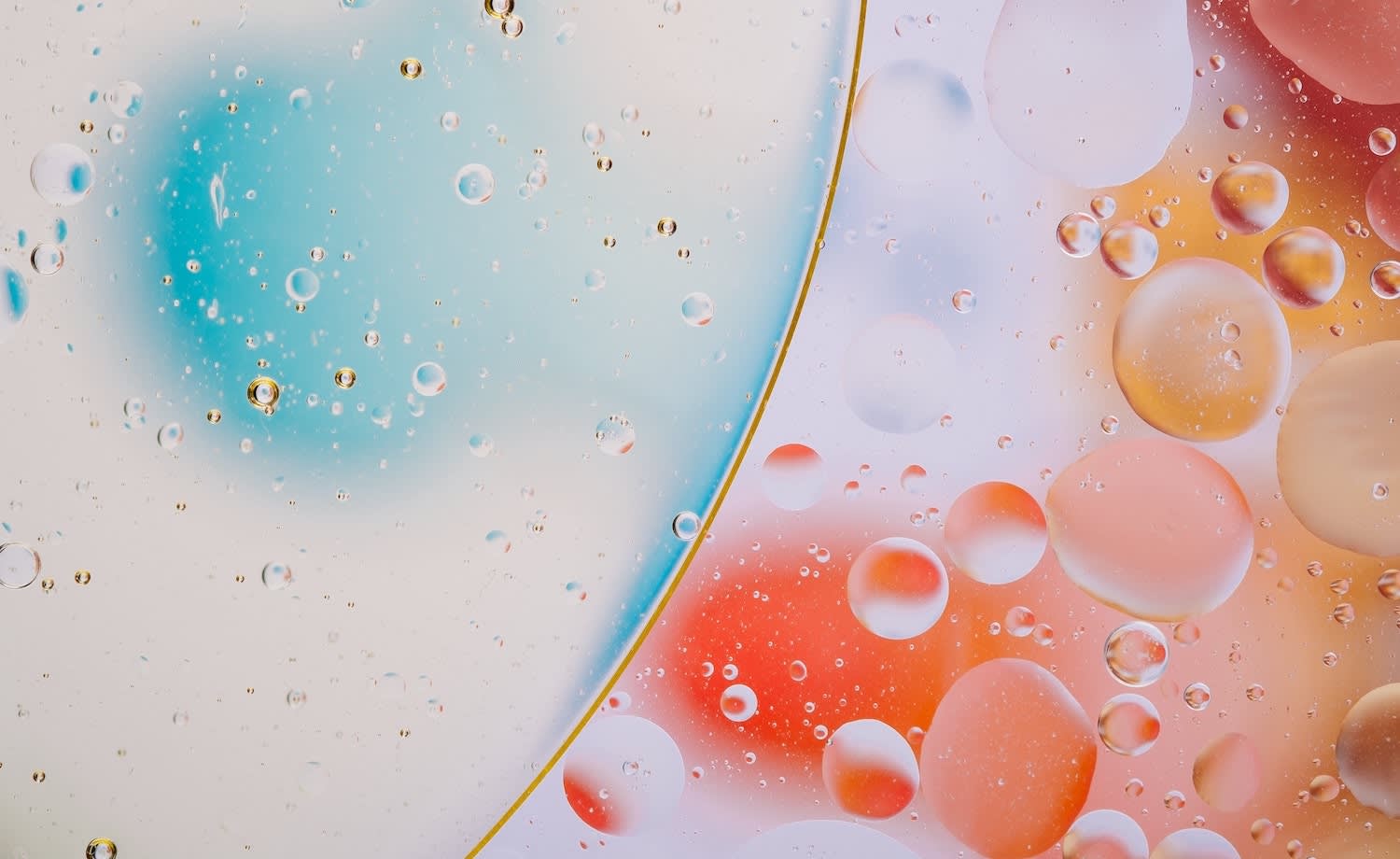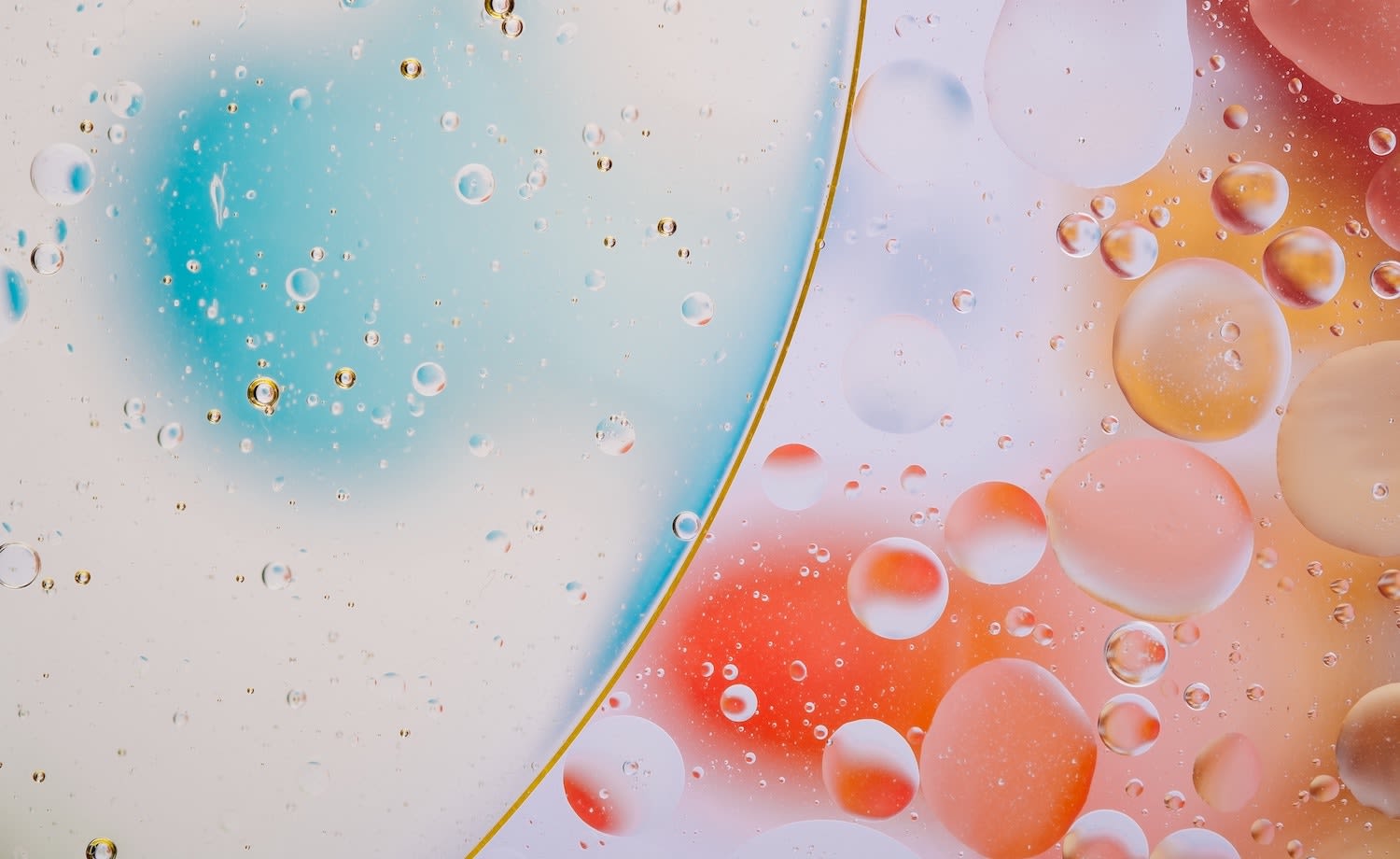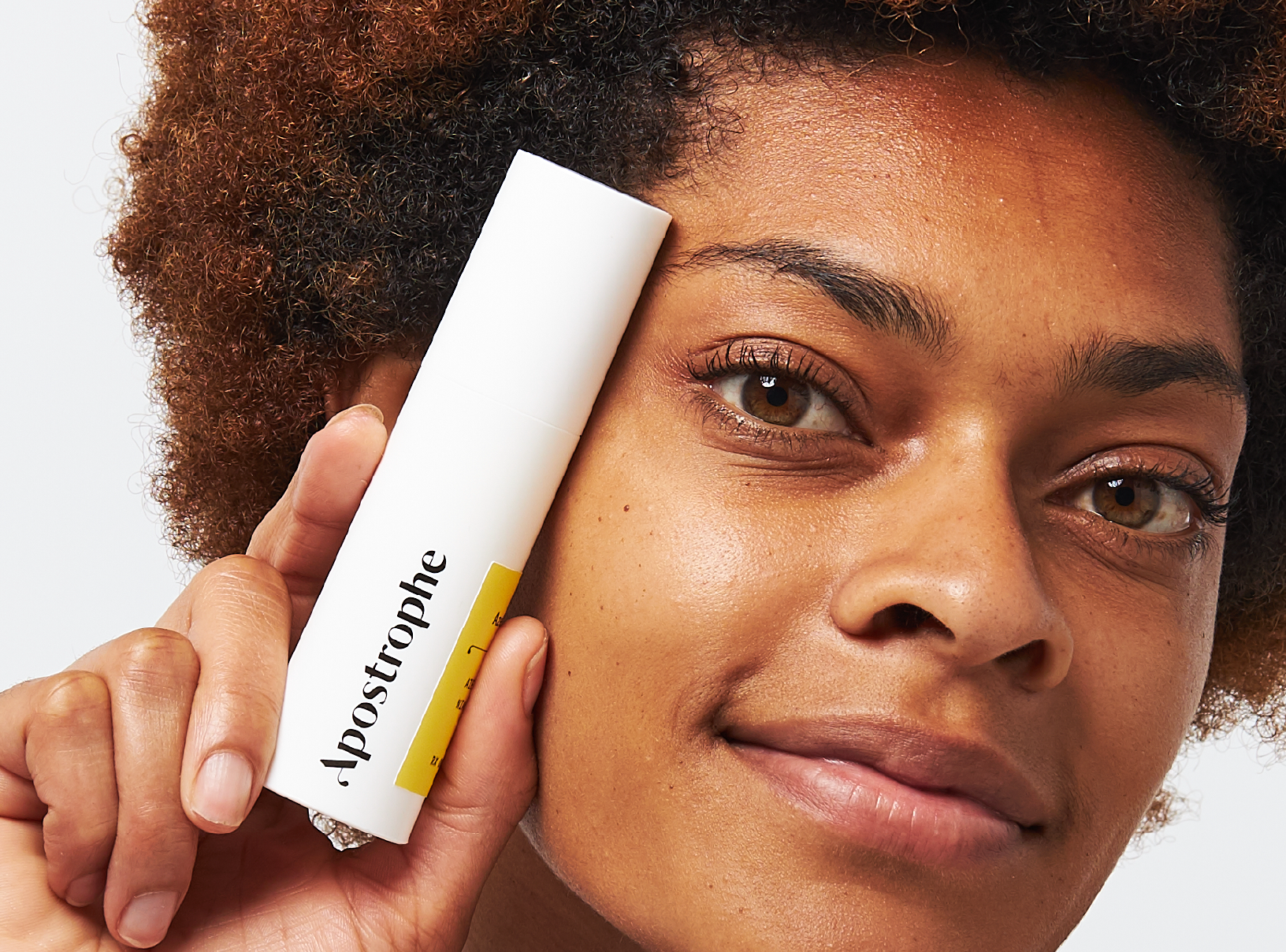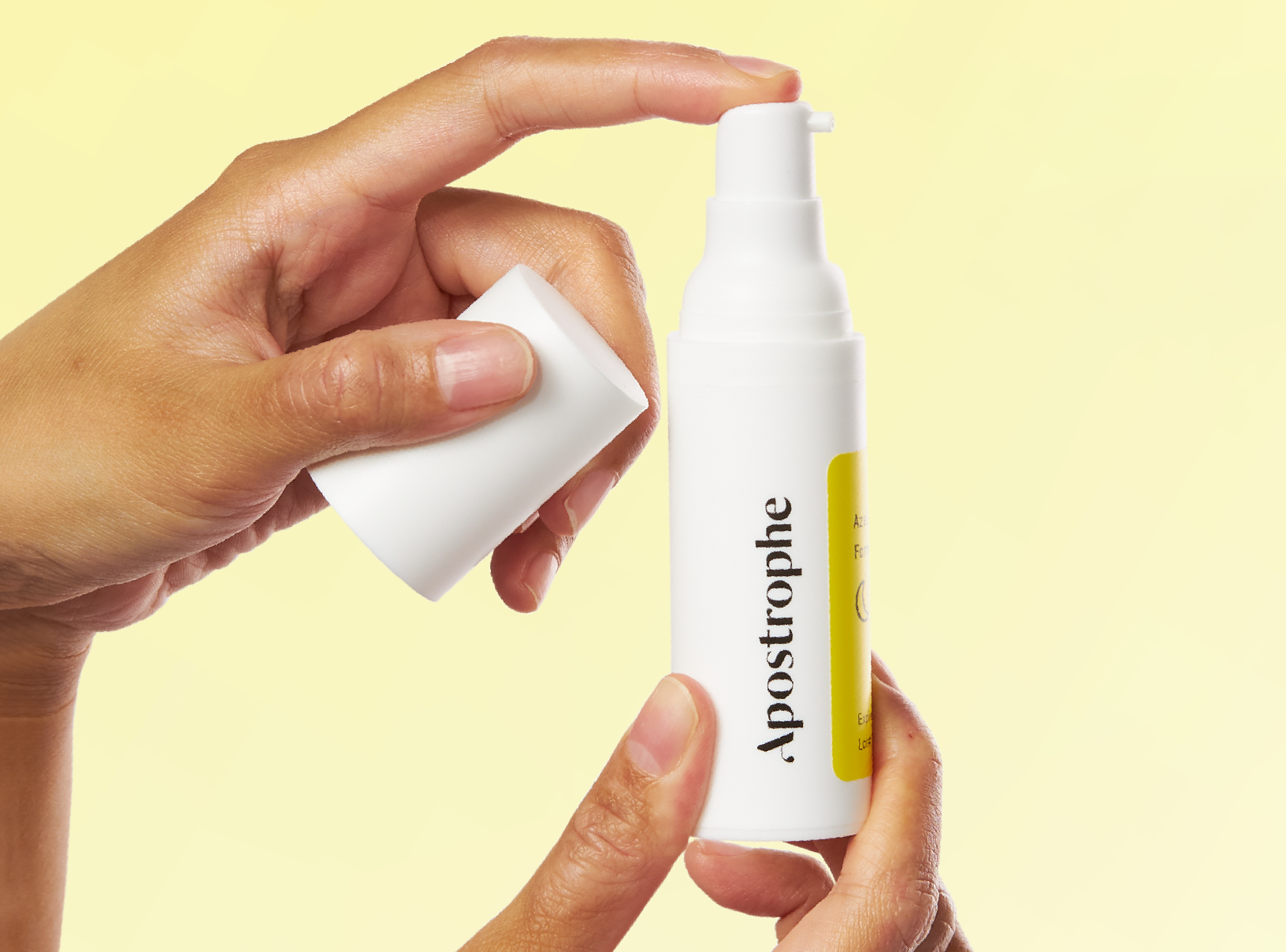Deep Dives
A Complete Guide to Use Hyaluronic Acid for Skincare


SHARE
Deep Dives
A Complete Guide to Use Hyaluronic Acid for Skincare
Medically reviewed by Kristin Hall, FNP
Written by Apostrophe Team
Last updated 4/5/2024
Search for skin care advice and you’ll quickly stumble onto hyaluronic acid, a naturally-occurring substance that’s used by your body for everything from wound healing to inflammation.
Hyaluronic acid is abundant in your body. In fact, a typical 154-pound person has approximately 15 grams of hyaluronic acid in them at any time for healthy skin growth and development.
As one of the most important components of strong, healthy skin, hyaluronic acid is a hot topic in the world of skincare right now.
Over the last decade, it’s made its way from cosmetic clinics into the world of mainstream skincare, becoming a popular ingredient in everything from masks and serums to moisturizers.
As strange as it may seem to apply an acid to your face for better skin, there’s lots of scientific evidence to back up hyaluronic acid’s effectiveness.
Unfortunately, like many other popular skincare ingredients, separating the reality of hyaluronic acid from the hype can be tough.
Many skincare brands make misleading claims about how and why hyaluronic acid functions as a skincare ingredient, as well as the type of results you can expect from it.
As a consumer, knowing what’s legitimate and what isn’t can help you get the best results from hyaluronic acid, all while avoiding costly but ineffective treatments.
Below, we’ve explained everything you need to know about using hyaluronic acid for skin care, from the type of benefits and results you should expect to side effects, dubious claims made by marketers and more.
What is Hyaluronic Acid?
Technically speaking, hyaluronic acid is a type of anionic, non-sulfated glycosaminoglycan. Oof, that's a mouthful.
In much simpler terms, hyaluronic acid is a substance that your body uses to keep your skin and connective tissue lubricated, strong, and healthy.
Hyaluronic acid is found naturally inside your body, typically in quantities of approximately 10 to 20 grams, about half of which is stored inside your skin.
You can think of hyaluronic acid as an essential tool for your skin.
Biologically, hyaluronic acid plays a key role in helping your skin retain moisture, making it vital for keeping your skin moisturized, strong, and capable of shielding your body’s organs from the outside world. This is why many people opt to use a hyaluronic acid moisturizer.
From a skincare perspective, hyaluronic acid plays several roles. By keeping your skin hydrated and healthy, it contributes to a smooth, firm, and plump look.
Skin that’s dehydrated and lacking in hyaluronic acid can often look washed out and less elastic.
Like with many naturally-occurring substances that maintain your skin, the amount of hyaluronic acid that’s produced by your body declines as you get older.
This decline in hyaluronic acid production -- as well as the production of other substances, such as collagen -- affects your skin’s texture and elasticity, causing wrinkles and other aging-related issues to develop.
Cosmetically, hyaluronic acid is used in two main ways. It’s a popular and effective dermal filler (a type of injectable medication administered by dermatologists and/or plastic surgeons), which has made it a mainstay of modern anti-aging treatment.
Hyaluronic acid fillers are often used to reduce the visibility of wrinkles, remove acne scars and add volume to depressions that can develop in the facial skin.
In addition to its use in injectable fillers, it's also widely used as an ingredient in topical skincare products such as creams, masks, and serums.
What Does Hyaluronic Acid Do?
Before we answer this question, it’s important to separate injectable hyaluronic acid (something that’s available from a dermatologist or plastic surgeon) from topical hyaluronic acid treatments that are available from department stores, drug stores, and supermarkets.
It’s also important to separate artificial hyaluronic acid (the type you’ll find in injectable fillers and topical creams) from the natural hyaluronic acid that’s produced and used by your body.
Natural hyaluronic acid is always present within your body. In your skin, it binds to water, helping your skin to stay moist, elastic, and healthy.
It also plays a major role in maintaining other parts of your body, including your eyes, joints, and connective tissue.
Some research even shows that hyaluronic acid could play a role in helping your body produce new bone tissue.
Around half of your body’s hyaluronic acid is found in the skin. Over time, factors such as sun exposure and normal aging can reduce the amount of hyaluronic acid that your body creates, often by a significant amount.
In short, the natural hyaluronic acid produced by your body plays an important role in a wide range of different processes, from maintaining your skin to keeping your entire body working efficiently.
Hyaluronic Acid Skin Products
Products that contain hyaluronic acid can be sorted into three categories: injectable dermal fillers, topical skin care products, and oral hyaluronic acid supplements.
Hyaluronic Acid Dermal Fillers
Hyaluronic acid is arguably best known for its use in dermal fillers. These are used to reduce the visibility of facial wrinkles, fine lines, and other common signs of skin aging.
Several popular dermal fillers contain hyaluronic acid, including those available under the brand names Juvederm®, Restylane®, Captique®, and Hylaform®.
Many studies have found that hyaluronic acid fillers are effective at slowing down and covering up the signs of aging, mostly by helping to make folds and wrinkles in facial skin less visible.
Like most dermal fillers, the results from hyaluronic acid aren’t permanent.
On average, you’ll need to repeat this type of treatment every three to nine months for lasting results, as injected fillers gradually break down once in your body.
As you’d expect, injectable hyaluronic acid isn’t something you can purchase over the counter from your local pharmacy.
It’s an elective, often costly cosmetic treatment you’ll need to speak about with a dermatologist or plastic surgeon.
Beyond its cosmetic benefits, injectable hyaluronic acid is also used in eye surgery (typically as part of cataract surgery) and as a treatment for osteoarthritis.
Topical Hyaluronic Acid Products
Visit your local drug store or department store’s skincare section and you’ll find many creams, cleansers, serums, and other products that contain hyaluronic acid.
When it’s used topically, the effects of hyaluronic acid on the skin are quite different from those of injectable hyaluronic acid.
Thanks to its powerful water-binding potential, topical use of hyaluronic acid may help to make your facial skin more hydrated and elastic.
Like injectable hyaluronic acid, topical products that contain hyaluronic acid can also make wrinkles lighter and less visible.
In a study published in the Journal of Drugs in Dermatology in 2011, researchers found that the use of a 0.1% hyaluronic acid cream led to “significant improvements” in skin hydration and elasticity in women between the ages of 30 and 60.
Other studies of topical hyaluronic acid have produced similar results.
For example, In a small study of 33 women published in the Journal of Clinical and Aesthetic Dermatology in 2014, researchers tested the effects of a nano-hyaluronic acid serum, lotion, and cream on a group of women with an average age in the mid-40s.
This type of hyaluronic acid has a low molecular weight, allowing it to pass more easily into the skin.
Over the course of eight weeks of treatment with the hyaluronic acid products, the women that took part in the study developed finer and more elastic skin.
They also showed milder wrinkles, with a reduction in wrinkle depth of up to 40 percent, as well as improvements in skin hydration and firmness.
Oral Hyaluronic Acid Supplements
Interestingly, there’s even some evidence that hyaluronic acid works as an anti-aging skin care treatment when it’s taken orally.
In a 2017 study of healthy Japanese men and women between ages 22 and 59, researchers found that oral hyaluronic acid helps to inhibit skin wrinkles, with users showing a reduction in wrinkle volume ratio after eight weeks of use.
In its oral form, hyaluronic acid is available as a dietary supplement. It’s often combined with vitamins, minerals, and other ingredients for optimal skin and bone health.
Benefits of Hyaluronic Acid
So, what can hyaluronic acid do for your skin? As we’ve touched on above, a lot. Large-scale research shows that hyaluronic acid has several positive effects on your skin, including many that can make the effects of aging less visible.
From a skincare perspective, the main benefits of hyaluronic acid are:
Fewer, less visible wrinkles. As we covered above, both topical hyaluronic acid and supplements that contain hyaluronic acid have been shown to make age-related lines and wrinkles lighter and less visible.
Smoother skin texture. Products that contain hyaluronic acid can improve your skin’s physical texture, making it look and feel smoother and less affected by imperfections.
Better hydrated, more elastic skin. Hyaluronic acid is famous for its ability to retain water. When applied to your skin, it can improve its moisture retention, firmness, and elasticity -- all factors that help to prevent common signs of skin aging.
Reduced skin irritation. In its topical form, hyaluronic acid is approved by the FDA to treat several as a medication for several forms of dermatitis, including atopic dermatitis (eczema) and allergic contact dermatitis.
Faster wound healing. Research suggests that hyaluronic acid can improve the skin’s ability to heal. The FDA has also approved topical hyaluronic acid products for wound and skin ulcer healing.
In its oral form, hyaluronic acid appears to offer additional benefits. For example, some research suggests that it may help to relieve the symptoms of acid reflux when it’s taken at the same time as other ingredients.
Other research suggests that hyaluronic acid may, in various forms, help to reduce the severity of osteoarthritis and prevent certain types of gum disease.
Research into these benefits of hyaluronic acid is ongoing, meaning it may be some time before we’re aware of its full potential.
Limits of Topical Hyaluronic Acid
Over the last few decades, hyaluronic acid has grown from a popular substance used mainly in cosmetic treatments to the latest, greatest ingredient in consumer skin care.
Like many other ingredients that go from somewhat popular to essential, some of the marketing claims about hyaluronic acid aren’t completely accurate.
Others are downright misleading, or in some cases, completely disproven by real scientific evidence.
Because of this, it’s important to cover what hyaluronic acid doesn’t do in addition to its potential benefits for your skin.
Based on current scientific data, it’s safe to say that hyaluronic acid does not:
Treat Acne Breakouts
Because of its popularity and reputation as a miracle ingredient in skin care, hyaluronic acid is often promoted as an active ingredient in acne creams.
However, there’s no scientific evidence to show that hyaluronic acid plays any role in reducing the severity of acne breakouts, or preventing them from occurring.
While using hyaluronic acid alongside a topical treatment for acne might make your skin more hydrated, there’s no evidence that it will enhance its ability to get rid of pimples.
Heal Scarring
While research shows that injectable hyaluronic acid might be effective at treating the scars that can develop from acne breakouts, there’s no scientific evidence that topical hyaluronic acid can fill in or smoothen facial scarring.
With this said, there’s some scientific evidence to show that topical hyaluronic acid can be used alongside cosmetic treatments, such as laser skin rejuvenation, to make acne scars lighter and less visible.
Protect You From The Sun
As you’d expect, skin care companies touting the use of hyaluronic acid for anti-aging and other skin care benefits have rushed to add it to their sunscreens.
While topical hyaluronic acid certainly helps to keep your skin moisturized, there’s only minimal scientific proof that it offers any sun protection benefits.
As such, even if you use skin care products that contain hyaluronic acid, it’s still best to use an SPF 30+, water-resistant sunscreen whenever you spend time outdoors in sunny weather.
Provide Filler-Like Results
Largely thanks to advertising campaigns, many people mistakenly believe that topical hyaluronic acid products are just as effective as hyaluronic acid fillers.
The hyaluronic acid molecules used in most anti-aging products are usually too big to penetrate deeply into the skin.
This means that topical hyaluronic acid skin care products are mostly just effective on your skin’s surface.
This doesn’t mean that topical hyaluronic acid isn’t effective -- most research shows that it very much is.
However, it does mean that you shouldn’t expect to see filler-like changes in your skin from topical hyaluronic acid products.
Completely Prevent Aging
Regular use of hyaluronic acid creams is linked to a real improvement in wrinkles, skin elasticity, and other common signs of aging.
However, it’s important to understand that hyaluronic acid doesn’t actually stop aging. Like other skin care products, it’s more effective at reducing the signs of aging than stopping them entirely.
Put simply, hyaluronic acid will slow down the skin aging process and may reverse certain signs of aging, but it isn’t a “pause” button for all skin aging.
As such, while hyaluronic acid skin care products will usually produce real improvements in your skin’s look and texture, there’s no guarantee that they’ll solve all of your skincare issues.
Hyaluronic Acid Side Effects
Is hyaluronic acid safe? Overall, data shows that hyaluronic acid is very safe to use. However, like with other skincare products, it’s important to understand that hyaluronic acid can potentially cause side effects.
Used as an oral supplement, hyaluronic acid has a good safety record. Studies show that long-term use is safe, with no reported side effects from hyaluronic acid supplementation.
Used as a topical skincare ingredient, hyaluronic acid is also well tolerated.
Used as a dermal filler, hyaluronic acid may cause certain side effects, including pain, bruising, itching, redness, and swelling.
These usually only last for a few days and may improve with a cold compress or ice pack.
If you’re considering injectable hyaluronic acid, your healthcare provider may suggest avoiding certain medications or supplements before the procedure to reduce your risk of side effects.
Like with other dermal fillers, it’s possible for hyaluronic acid to give the skin an uneven, bumpy appearance.
These side effects are common for all dermal fillers and aren’t unique to products containing hyaluronic acid.
Since hyaluronic acid is a substance your body produces naturally, it’s very uncommon for it to cause any allergic reaction symptoms.
Is Hyaluronic Acid Worth Using?
Simply put, yet. Although some hyaluronic acid products overstate the effects of hyaluronic acid, there’s real scientific evidence that regular use of hyaluronic acid can reduce the appearance of wrinkles, moisturize dry skin and improve your skin’s general health and appearance.
There’s also evidence that it has benefits for your skin’s physical structure, which may improve things such as integrity and skin barrier function.
Hydrated skin is healthy skin, and hyaluronic acid’s benefits for skin hydration make it a useful, dynamic ingredient that has a place in any anti-aging skincare routine.
If your goal is to reduce the visibility of facial wrinkles and moisturize your skin, using a skincare cream that contains hyaluronic acid can be a great idea.
For more powerful results, you may want to look into hyaluronic acid dermal fillers. However, it’s worth noting that these need to be repeated for lasting results and often come with a significant price tag.
The Bottom Line on Hyaluronic Acid for Skin Care
As one of the hottest ingredients in skin care, hyaluronic acid has a reputation as an ingredient that can work serious magic on your skin.
Research shows that, at least to an extent, this reputation is deserved. If you have wrinkles or other signs of aging that you’d like to treat, products containing hyaluronic acid can serve as a great base for your skincare routine.
21 Sources
Stern, R. (2004, August). Hyaluronan catabolism: a new metabolic pathway. European Journal of Cell Biology. 83 (7), 317-25. Retrieved from https://pubmed.ncbi.nlm.nih.gov/15503855/
Miller, T., Goude, M.C., McDevitt, T.C. & Temenoff, J.S. (2014, April). Molecular engineering of glycosaminoglycan chemistry for biomolecule delivery. Acta Biomaterialia. 10 (4), 1705–1719. Retrieved from https://www.ncbi.nlm.nih.gov/pmc/articles/PMC3960340/
Gupta, R.C., Lall, R., Srivastava, A. & Sinha, A. (2019). Hyaluronic Acid: Molecular Mechanisms and Therapeutic Trajectory. Frontiers in Veterinary Science. 6, 192. Retrieved from https://www.ncbi.nlm.nih.gov/pmc/articles/PMC6603175/
Walker, K., Basehore, B.M., Goyal, A., Bansal, P. & Zito, P.M. (2020, September 29). Hyaluronic Acid. StatPearls. Retrieved from https://www.ncbi.nlm.nih.gov/books/NBK482440/
What types of dermal fillers are available? (n.d.). Retrieved from https://www.plasticsurgery.org/cosmetic-procedures/dermal-fillers/types
Lajeunesse, D., Delalandre, A., Martel-Petelletier, J. & Pelletier, J.P. (2003, October). Hyaluronic acid reverses the abnormal synthetic activity of human osteoarthritic subchondral bone osteoblasts. 33 (4), 703-10. Retrieved from https://pubmed.ncbi.nlm.nih.gov/14555276/
Gold, M.H. (2007, September). Use of hyaluronic acid fillers for the treatment of the aging face. Clinical Interventions in Aging. 2 (3), 369–376. Retrieved from https://www.ncbi.nlm.nih.gov/pmc/articles/PMC2685277/
Goa, K.L. & Benfield, P. (1994, March). Hyaluronic acid. A review of its pharmacology and use as a surgical aid in ophthalmology, and its therapeutic potential in joint disease and wound healing. Drugs. 47 (3), 536-66. Retrieved from https://pubmed.ncbi.nlm.nih.gov/7514978/
Pavicic, T. et al. (2011, September). Efficacy of cream-based novel formulations of hyaluronic acid of different molecular weights in anti-wrinkle treatment. Jornal of Drugs in Dermatology. 10 (9), 990-1000. Retrieved from https://pubmed.ncbi.nlm.nih.gov/22052267/
Jegasothy, S.M., Zabolotniaia, V. & Biefeldt, S. (2014, March). Efficacy of a New Topical Nano-hyaluronic Acid in Humans. Journal of Clinical and Aesthetic Dermatology. 7 (3), 27-9. Retrieved from https://pubmed.ncbi.nlm.nih.gov/24688623/
Oe, M., et al. (2017). Oral hyaluronan relieves wrinkles: a double-blinded, placebo-controlled study over a 12-week period. Clinical, Cosmetic and Investigational Dermatology. 10, 267–273. Retrieved from https://www.ncbi.nlm.nih.gov/pmc/articles/PMC5522662/
Voinchet, C., Vasseur, P. & Kern, J. (2006). Efficacy and safety of hyaluronic acid in the management of acute wounds. American Journal of Clinical Dermatology. 7 (6), 353-7. Retrieved from https://pubmed.ncbi.nlm.nih.gov/17173469/
Palmieri, B., et al. (2013, December). Fixed combination of hyaluronic acid and chondroitin-sulphate oral formulation in a randomized double blind, placebo controlled study for the treatment of symptoms in patients with non-erosive gastroesophageal reflux. European Review for Medical and Pharmacological Sciences. 17 (24), 3272-8. Retrieved from https://pubmed.ncbi.nlm.nih.gov/24379055/
Euppayo, T., Punyapornwithaya, V., Chomdej, S., Ongchai, S. & Nganvongpanit, K. Effects of hyaluronic acid combined with anti-inflammatory drugs compared with hyaluronic acid alone, in clinical trials and experiments in osteoarthritis: a systematic review and meta-analysis. BMC Musculoskeletal Disorders. 18, 387. Retrieved from https://www.ncbi.nlm.nih.gov/pmc/articles/PMC5585914/
Casale, M., et al. (2016, December). Hyaluronic acid: Perspectives in dentistry. A systematic review. International Journal of Immunopathology and Pharmacology. 29 (4), 572-582. Retrieved from https://pubmed.ncbi.nlm.nih.gov/27280412/
Artzi, O., Cohen, S., Koren, A., Niv, R. & Friedman, O. (2020, January). Dual-plane hyaluronic acid treatment for atrophic acne scars. Journal of Cosmetic Dermatology. 19 (1), 69-74. Retrieved from https://pubmed.ncbi.nlm.nih.gov/31074185/
Alsaedy, S.J., Mosa, K.A. & Alshami, S.H. (2017). The Efficacy of Topical Hyaluronic Acid Serum in Acne Scar Patients Treated with Fractional CO2 Laser. American Journal of Dermatology and Venereology. 6 (2), 17-24. Retrieved from http://article.sapub.org/10.5923.j.ajdv.20170602.01.html
Trommer, H., et al. (2003, March 26). The effects of hyaluronan and its fragments on lipid models exposed to UV irradiation. International Journal of Pharmaceutics. 254 (2), 223-234. Retrieved from https://www.sciencedirect.com/science/article/abs/pii/S0378517303000334
Wollina, E. & Goldman, A. (2015). Fillers for the improvement in acne scars. Clinical, Cosmetic and Investigational Dermatology. 8, 493–499. Retrieved from https://www.ncbi.nlm.nih.gov/pmc/articles/PMC4598204/
Becker, L.C., et al. (2009, July 1). Final Report of the Safety Assessment of Hyaluronic Acid, Potassium Hyaluronate, and Sodium Hyaluronate. International Journal of Toxicology. 28 (4), 5-67. Retrieved from https://journals.sagepub.com/doi/10.1177/1091581809337738
Oe, M., et al. (2019, January 27). Oral hyaluronan relieves knee pain: a review. Nutrition Journal. 15, 11. Retrieved from https://nutritionj.biomedcentral.com/articles/10.1186/s12937-016-0128-2
Like what you just read? Sign up for our email list to get the scoop on skincare science delivered straight to your inbox.

Deep Dives
A dermatologist shares his thoughts on the recent studies about benzoyl peroxide and benzene.
Read More
Education
What is milia?
What is milia? Today, we’re jumping into one type of bump that you may have heard about most commonly in infants — milia.
Read More
Education
Best moisturizer for acne-prone skin
If you have combination acne-prone skin, figuring out which moisturizer is best for your skin might be tough. In this guide, we break down the best moisturizer for combination, acne-prone skin.
Read More
